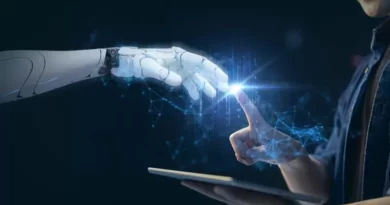Creating Hyper-Realistic Virtual Reality Avatars With 3D Modeling
Avatars can be created with physical appearance and ideals, strengths, and weaknesses. People respond more positively to human faces, and businesses are beginning to capitalize on this by deploying AI-powered avatars.
Avatars are graphical representations of humans that are used in virtual environments in the same way that 3D characters are used in video games. However, with recent advances in VR technology, avatars may appear quite similar to real-life images. Using 3D modeling technology, it is now possible to create a realistic avatar.
How Do Lifelike Avatars Get Made?
A computer graphic approach is used to create life-like avatars. Artists use specialized software to scan the face and/or body to generate a three-dimensional digital model. The technology uses motion-capture and face-and-body scanning technologies to fully recreate the model’s precise facial characteristics, attitudes, body movements, and more. It’s basically the same as creating a digital clone. Avatars can be used in various scenarios, including gaming, virtual conferencing, and virtual sociability.
Ways to Make An Avatar
Full-Body Scan
In this procedure, a full-body scanner is used to record every inch of the body from head to toe. Models must go to a studio to have their photos scanned.
Facial Scan
In contrast, this method employs an app that can be accessed via a smartphone device. Take a single selfie or a 360-degree shot of your face and chest, and the app will do the rest.
Using A Full-Body Scan to Create An Avatar
Full-body scan: The model is placed inside a full-body scanner, which uses multiple camera angles to capture the entire body. Following that, high-resolution head scans will be performed to capture the model’s facial expression.
Motion capture: At this point, the model will put on a motion-capture suit to record their body and finger motions, as well as duplicate their unique gestures, in order to further customize the avatar.
Data processing: The specialized software will then process all of the data in order to create the 3D avatar.
Avatar fine-tuning and touch-up: To touch up and further modify the avatar, you can use free open-source apps like Blender.
How to Make An Avatar From A Facial Scan
Selfie or scan of the face/bust: As previously stated, the model will take a single selfie or use their phone to take a 360-degree shot of their face and chest area.
Data processing: The program will use the snapshot to generate a 3D model automatically. The face is then joined to a pre-programmed 3D body to create a full-body avatar.
Fine-tuning: As with the full-body scan procedure, the resulting 3D model can be fine-tuned to taste.
AI Avatars
AI Avatars are animated figures powered by AI that can converse with you! Because they are speech-enabled, like Voice Assistants, you can not only hear and chat with them but they are also animated to give the voice a face, so you can see them as well. Following Voice Assistants, they are the next stage in conversational AI. An artificial intelligence avatar is much more than just a voice and a face.
Users will become more aware of the experience and interact in a more immersive manner if they see themselves physically portrayed in the virtual environment, resulting in increased engagement (within the platform).
AI Avatar Types
There is no universally accepted definition of what an avatar should look like. Nowadays, you can get various types of avatars based on their bodily attributes. Depending on the quality, low-quality cartoon-like or photorealistic avatars are available in two dimensions. None of these avatars have any motions or facial expressions.
3D Cartoon-like Avatars: These avatars have a higher resolution than the previous ones, but they still portray you as a cartoon-like avatar.
Avatars with Photorealism: These avatars represent new cutting-edge technology when compared to the previous two. They provide a realistic virtual representation of oneself as well as facial emotions that enhance the lifelikeness of your avatar.
Depending on the Body Composition
Half-body avatars: These avatars are used in basic VR apps. They don’t make complicated movements with their bodies. The majority of the time, the user sees the world through the eyes of the avatar. The avatar’s upper body and arms are visible to the other players, but not its legs. This allows them to reduce file size while keeping the avatar functional.
Avatars with full bodies: Sensors in the full-body avatar reconstruct and duplicate the movements of the entire body. As a result, you have a lot more flexibility in the virtual world, and you can reach digital objects with your limbs.
Depending on the Quality
Low-quality cartoon-like or photorealistic avatars are available in two dimensions. None of these avatars have any motions or facial expressions.
3D Cartoon-like Avatars: These avatars have a higher resolution than the previous ones, but they still portray you as a cartoon-like avatar.
Avatars with Photorealism: These avatars represent new cutting-edge technology when compared to the previous two. They provide a realistic virtual representation of oneself as well as facial emotions that enhance the lifelikeness of your avatar.
Conclusion
The possibilities are endless; avatars can be created with physical appearance and ideals, strengths, and weaknesses. People respond more positively to human faces, and businesses are beginning to capitalize on this by deploying AI-powered avatars. While an intelligent avatar learns from the algorithms and rules that its creators specify, it also learns from interactions with users.



